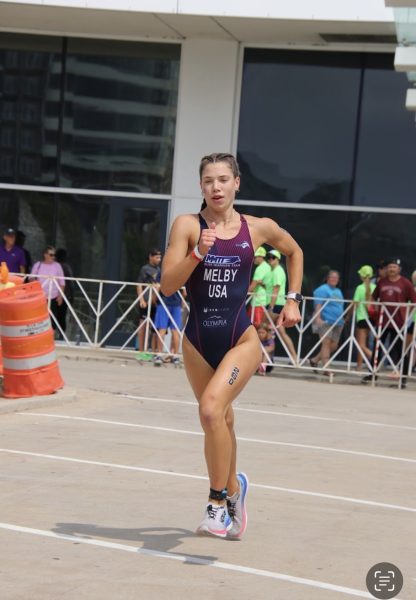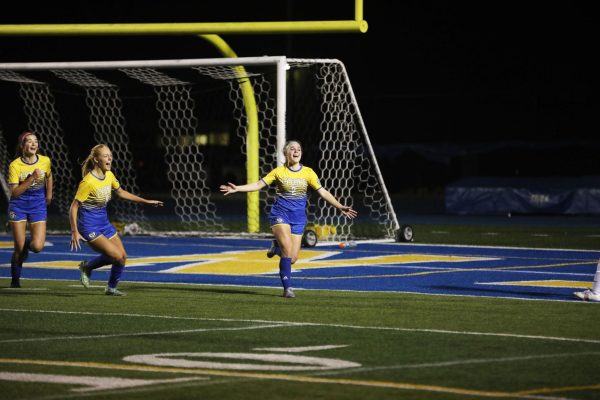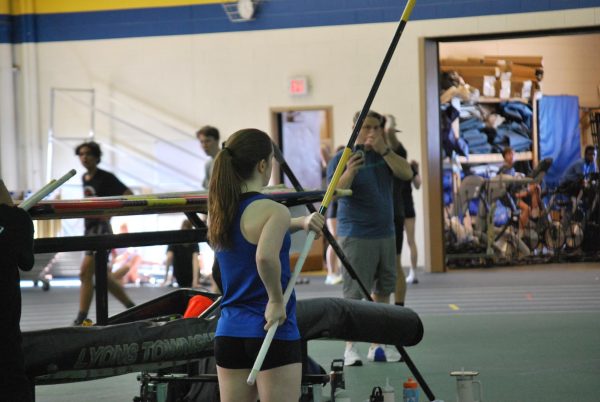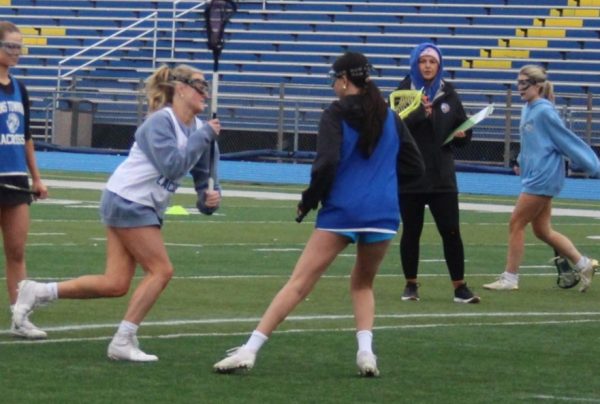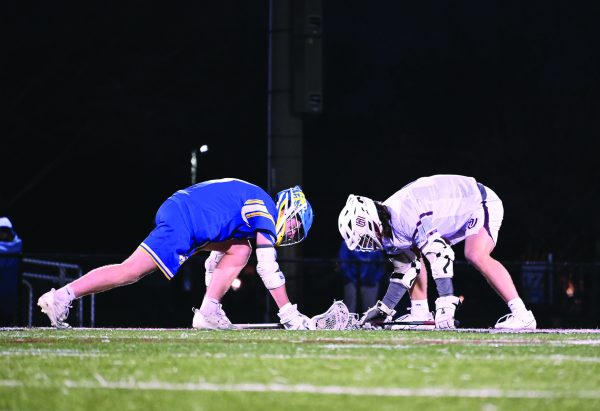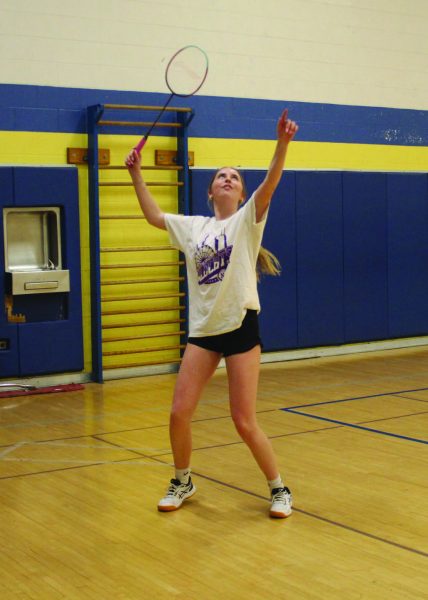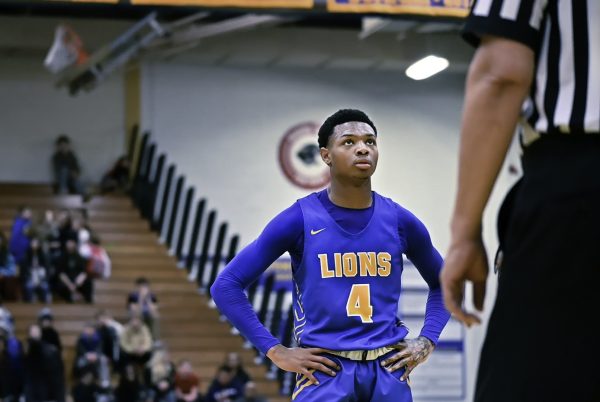Interactions Among Sports: Cross Country and Swimming
The shared season of the boys and girls cross country teams has caused the teams to have a seemingly more separate relationship when compared to the unified boys and girls swimming teams. The relationship among the boys and girls teams in these two sports is explored.
October 22, 2014
As high school athletic seasons enter full swing, the year begins with a variety of sports, usually comprised of only one gender. This, however, is not the case for boys and girls cross country as both teams compete during the same season. This could perhaps have an effect on the relationship between the two teams as it differs widely from that of girls swimming, currently in season, and its male counterpart, which competes in the winter.
“Each sport has such a different relationship because of the setting of competition and training,” swimmer Lucas O’Bryan ‘15 said. “The pool is a very intimate setting with everyone bunched together. That definitely facilitates a closer environment between the guys and girls teams. The fact that no more than 10 people compete at a time really means that everyone gets some moment of individual attention, versus cross country where dozens can be racing at a time.”
The close-knit relationship among the swim team members may be rooted in outside factors as well. Even though the boys and the girls compete during different seasons, the relationship between the two teams tends to be stronger and more familial.
“It helps that swimming, outside of the swim seasons for LT, is coed,” swimmer Julia Cohen ‘15 said. “This allows us to become better friends with the opposite gender, and because boys and girls swim off-seasons together, we tend to know each others’ times so when we go to meets, we can really see if they are improving or not. This helps when we cheer on each other because we know their goals, and we can help motivate them to achieve their goals.”
This sense of support is pivotal to the relationship between the swim teams. Athletes are always encouraged to support the other team.
“We try to support each other through our meets,” head girls swimming coach Kurt Johns said. “We always need meet workers. Coach [Scott] Walker and I try to encourage the girls to come to the boys’ meets, and vice versa. So I think that helps with the two teams interacting. When the girls go back and swim club, they’ll swim with guys, and that helps with interaction between the two.”
This tight bond between the teams may do more than just bring the teams together at meets. The relationship may contribute to an individual’s performance, or a team’s performance.
“A lot of times in swimming, you ask yourself ‘Why am I doing this?’” head boys swimming coach Walker said. “The vast majority of the time, the things that get you to practice, is because of your relationship with the guys and the girls. And it gets you there, and once you’re there, everything’s fine. Swimming is grueling, it’s monotonous, it’s repetitive. There are so many times that you could quit, and I think there’s an internal feeling that you helped me get through tough times when the other person doesn’t even know it. And the majority of the time, it’s another person of the opposite sex.”
Although the boys and girls cross country teams share a common season, the relationship between the two is very different from that of swimming. Perhaps the large size of each team, 130 boys and over 200 girls, makes it difficult to develop a bond.
“Cross country is a huge sport within the boys and the girls, so it makes it difficult to get close when we have the rest of our team to worry about,” runner Mayra Baeza ‘15 said. “What I do enjoy about our relationship is that when we are together, either at a meet, practice, or out of practice, we understand each other’s pain when it comes to running, and we are able to relate with each other sometimes, even without voicing it.”
With the size of the two teams, many different programs, motives and ideas can develop, as not everyone will have the same point of view.
“Our programs are different, each competing against our conference teams,” runner Zach Szcezniak ‘15 said. “Even though our sports both involve racing three miles, our training and work outs are different. It’s just hard to make close to 300 [runners] get along and coach them as one team going for many different goals.”
Although the teams are separate, there is no rivalry between the two teams. The teams may be isolated, but they do work together in some manners.
“I think there is a camaraderie that people on the outside might not see,” head girls cross country coach Stetson Steele said. “I pick Coach [Mike] Danner’s brain about certain things, he talks to me about things. We love seeing the boys do well. I think they feel the same way. I think there is motivation, ‘Hey they’re top five, we want to be top five, they’re top 10, we want to be top 10’. I don’t know if the girls see that as much as we do as coaches, but I think between coaches there definitely is. It’s a supportive environment.”
While most may see some connection, there is little hope for furthering the relationship in the future. Some wish to keep the two teams separate and continue running as normal.
“I don’t coach the girls,” head boys cross country coach Danner said. “They’re a separate team. Our top varsity athletes are running a five flat, or faster than five. Why would we have them practice with someone that’s not running at that level? Why would we slow them? I wouldn’t take our varsity kids and run them with the freshman. [At meets] we have our team area, they have their team area; I would never think of interfering with the girls coaches.”






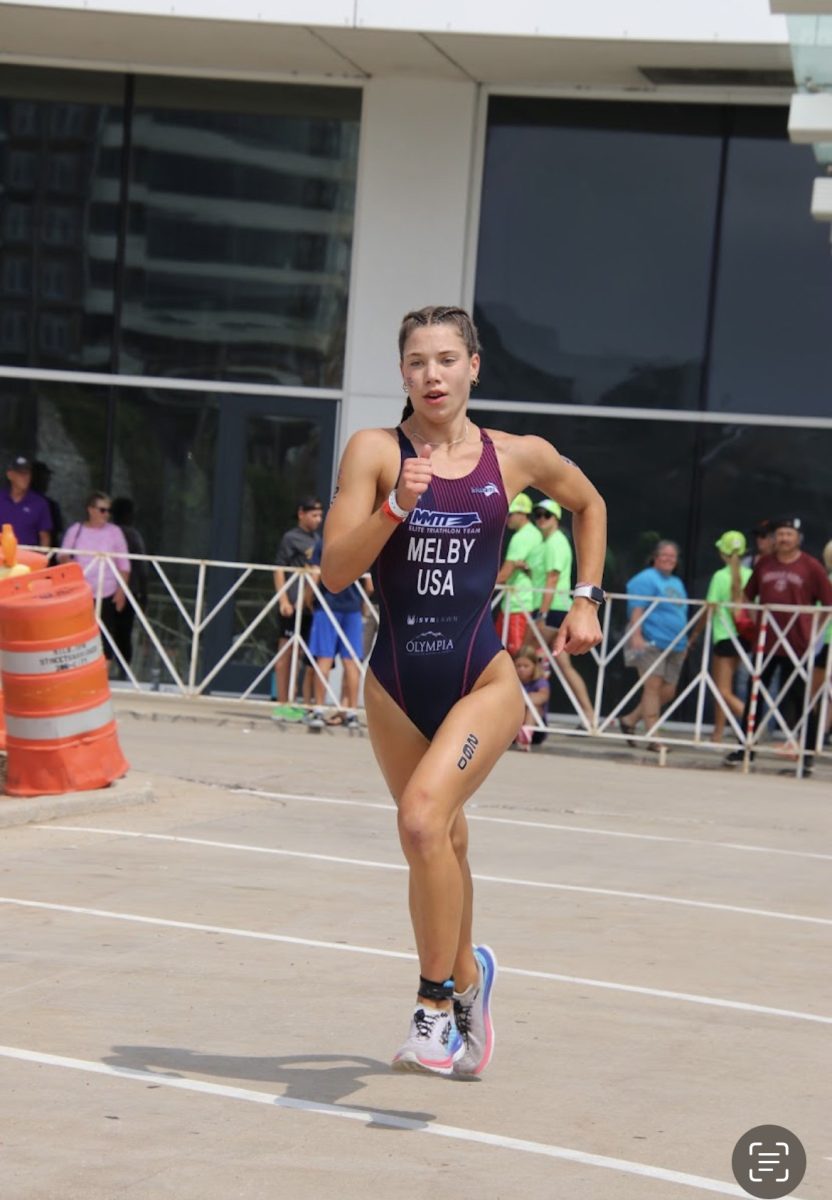
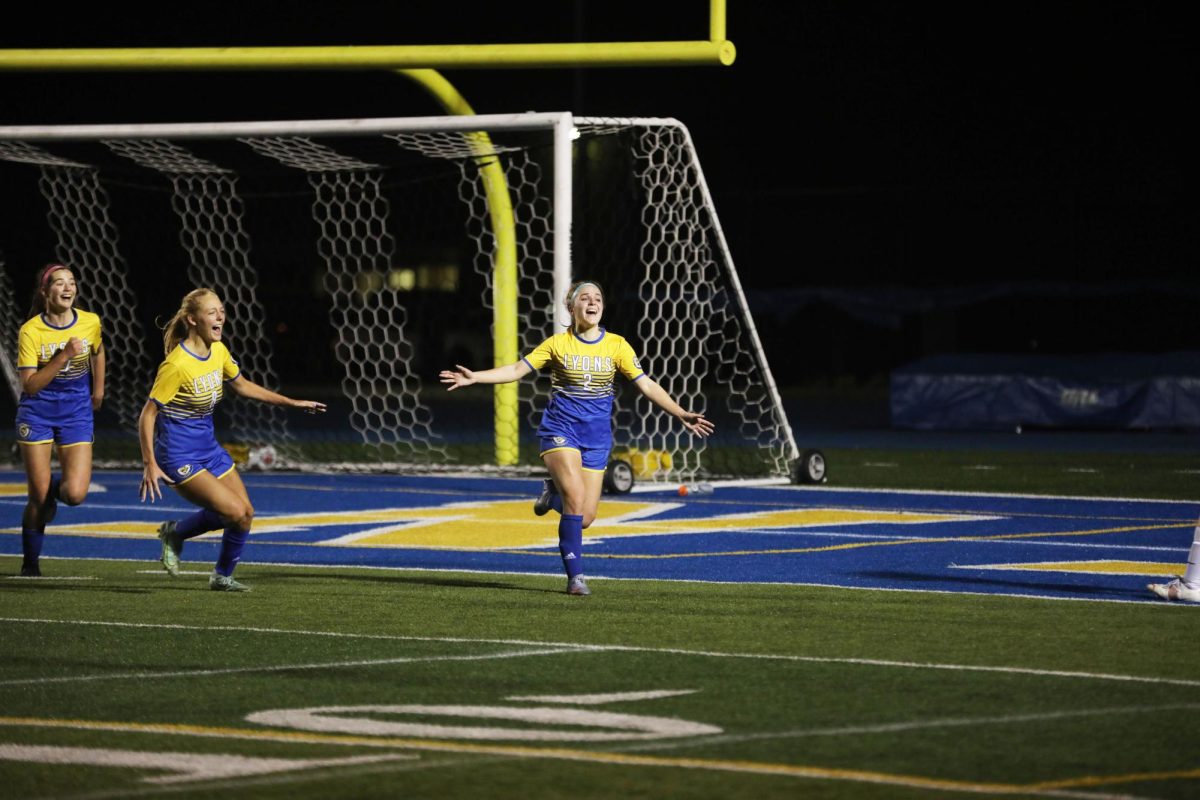

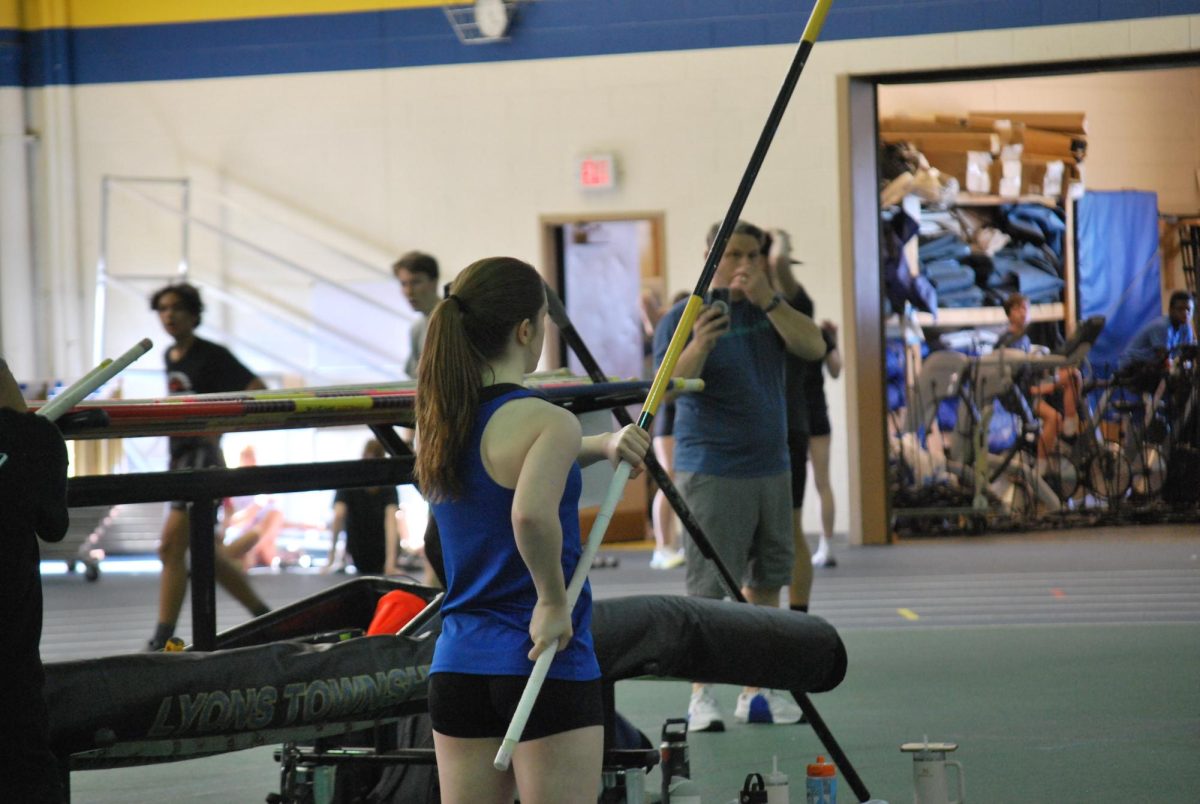
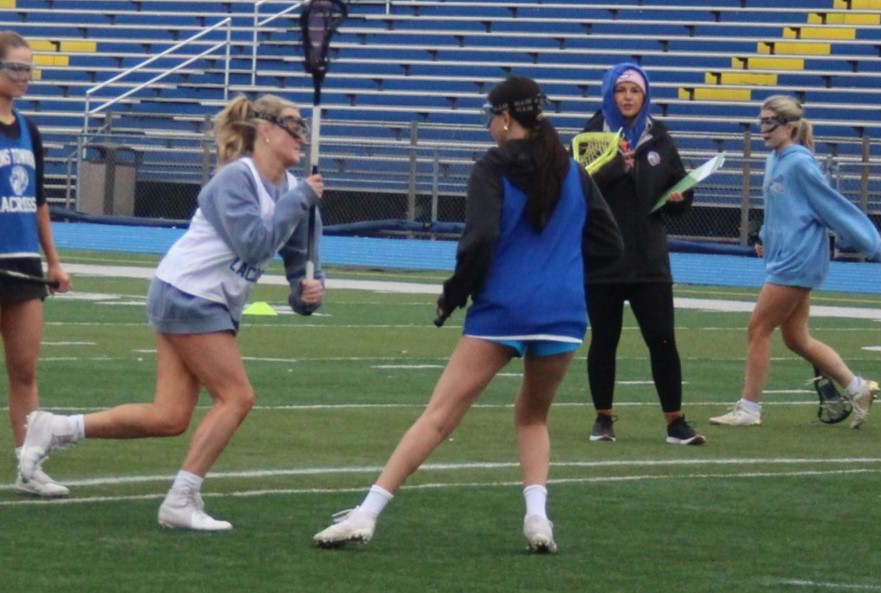







![Movie poster for [Rec] (2007).](https://www.lionnewspaper.com/wp-content/uploads/2023/04/rec-640x900.jpg)

